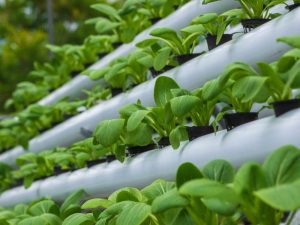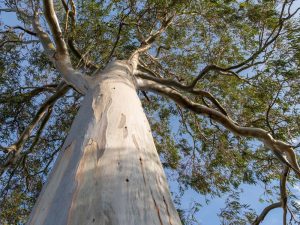Last Updated on January 3, 2024 by teamobn
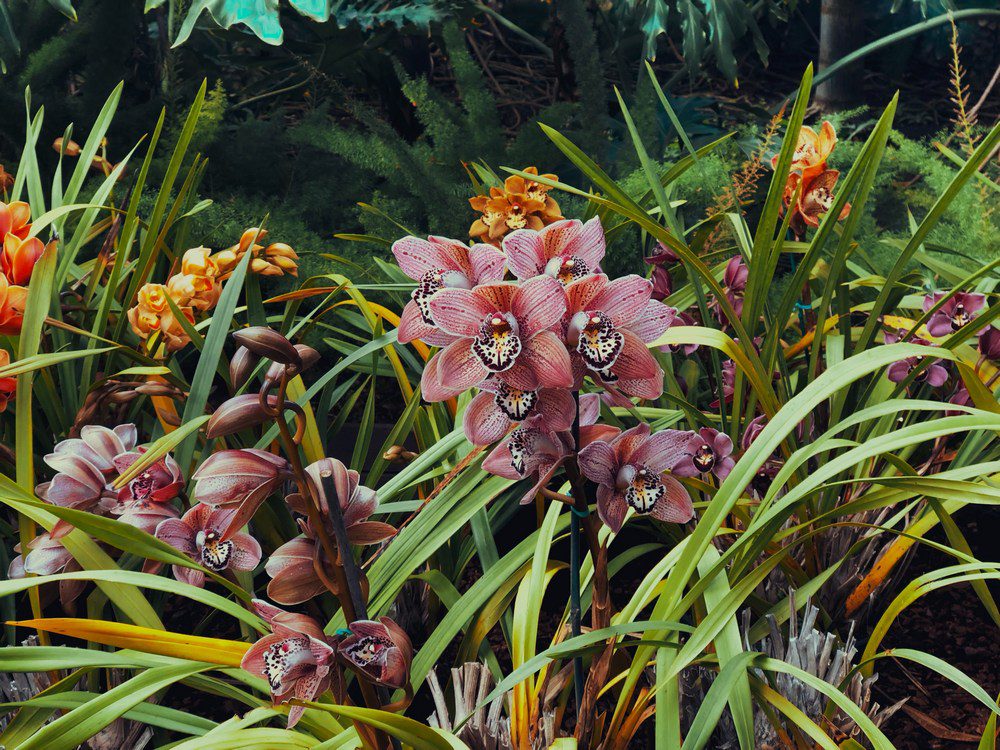
Tropical garden design transforms ordinary spaces into lush, exotic retreats. This article delves into the art of creating a tropical paradise. We’ll offer practical tips and techniques to master tropical garden design, ensuring your space embodies the essence of a tropical oasis.
Understanding Tropical Garden Design
Contents
- 1 Understanding Tropical Garden Design
- 2 Creating a Tropical Garden in Your Outdoor Space
- 3 Maintenance Tips for Tropical Gardens
- 4 FAQ on Tropical Garden Designs
- 4.1 What is tropical garden design?
- 4.2 Can I create a tropical garden in a cooler climate?
- 4.3 How often should I water my tropical garden?
- 4.4 What are some must-have plants for a tropical garden?
- 4.5 How do I choose the right location for my tropical garden?
- 4.6 Are water features necessary in tropical garden design?
- 4.7 What type of maintenance does a tropical garden require?
- 4.8 How do I protect my tropical garden in winter?
- 4.9 Can I incorporate a lawn into my tropical garden design?
- 4.10 How can I make my tropical garden more wildlife-friendly?
- 5 Conclusion
Tropical garden design is more than just planting exotic plants. It’s about creating an environment that captures the essence of the tropics. In this section, we’ll explore what makes tropical garden design unique and how to bring its vibrant beauty to your space.
Defining the Aesthetic of Tropical Garden Design
The aesthetic of tropical garden design is defined by its lushness and vibrancy. It’s a style that evokes feelings of warmth and relaxation, typically featuring a variety of textures, colors, and dense plantings. This design isn’t just about including tropical plants but crafting an environment that feels exotic and serene. The key is creating a space that transports you to a tropical paradise, regardless of location.
Key Elements of Tropical Garden Design
Vibrant Colors: One of the hallmarks of tropical garden design is the use of bright, bold colors. From the deep greens of foliage to the bright hues of tropical flowers, color plays a vital role. Plants like hibiscus, bird of paradise, and bromeliads offer stunning blooms that are quintessential to the tropical aesthetic.
Diverse Textures: Texture variation is crucial in tropical garden design. Incorporating different leaf shapes and sizes adds depth and interest. Large, glossy leaves of plants like the elephant ear or philodendron stand out against finer textures, such as ferns or ornamental grasses. This contrast in textures helps to create a lush, layered look.
Layered Plantings: Tropical gardens are often characterized by their layered plantings. This approach involves arranging plants in tiers, with taller trees and shrubs providing a canopy for understory plants. Groundcovers and smaller plants fill in the lower layers, creating a sense of fullness and abundance.
Creating a Tropical Atmosphere
Creating a tropical atmosphere involves more than just selecting the right plants. It’s about designing a space that feels cohesive and immersive. Elements like water features, pathways, and seating areas contribute to the overall experience. The goal is to create a garden that looks tropical and feels like a retreat from the everyday world.
Creating a Tropical Garden in Your Outdoor Space
Transforming your outdoor space into an exotic work of art should be possible when you know the basics. Below are the steps to help you develop a tropical garden design unique to your house.
Planning Your Tropical Garden
Embarking on a tropical garden design project requires careful planning and consideration. It’s about creating a space that is both beautiful and sustainable. In this section, we’ll guide you through the key steps in planning your tropical garden, ensuring your vision becomes a reality.
Assessing Space and Climate Considerations
- Understanding Your Space: Before diving into tropical garden design, evaluate your available space. Consider the size, shape, and existing features of your garden. A tropical garden can be adapted to various spaces, from large backyards to small urban balconies. Understanding your space helps in making informed decisions about plant selection and layout.
- Climate and Soil Type: The success of your tropical garden design largely depends on your local climate and soil conditions. Tropical plants generally thrive in warm, humid environments. If you live in a cooler climate, consider using cold-hardy tropicals or creating a microclimate. Also, analyze your soil type. Tropical plants often prefer well-draining soil rich in organic matter.
Choosing the Right Location and Layout
- Selecting the Ideal Spot: Choose a location in your garden that receives adequate sunlight. Many tropical plants need plenty of light to flourish. However, some may require partial shade. Understanding the light requirements of your chosen plants is crucial.
- Designing the Layout: Regarding tropical garden design, the layout is key. Think about how you want to move through the space. Incorporate winding pathways, secluded seating areas, and focal points like a water feature or a striking plant. Plan your garden layout to create a journey through the tropical landscape.
- Utilizing Vertical Space: In tropical garden design, vertical space is as important as the ground area. Use trellises, walls, or arbors for climbing plants like bougainvillea or passionflower. This not only adds height but also creates a lush, dense feel.
Incorporating Essential Elements for Tropical Garden Design
- Water Features: Water is a central element in many tropical landscapes. Adding a pond, fountain, or stream can create a soothing ambiance, reflecting the lush surroundings and attracting wildlife.
- Pathways and Seating: Pathways should blend seamlessly with the garden, using natural materials like stone or wood. Seating areas provide spots to relax and enjoy the tropical paradise you’ve created. Consider shaded areas for comfort in warmer climates.
- Selecting Materials and Textures: Choose materials that complement the tropical theme. Natural stone, bamboo, and weathered wood can enhance the tropical feel. Textures play a vital role in creating an authentic tropical atmosphere.
Planning for Growth and Maintenance
Remember, tropical gardens are dynamic and will evolve. Plan for the growth of plants and the maintenance they will require. Ensure enough space for plants to reach their full size without overcrowding.
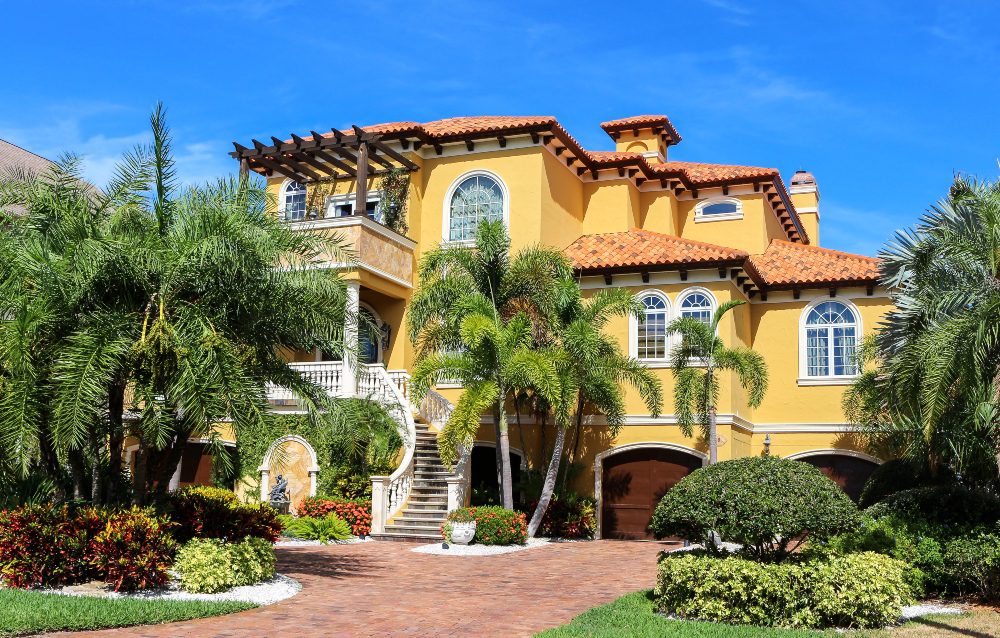
Selecting Plants for Your Tropical Garden
A pivotal aspect of tropical garden design is selecting the right plants. This choice not only defines the garden’s aesthetic but also determines its longevity and ease of maintenance. This section will guide you through choosing plants to bring your tropical garden design to life.
Understanding Plant Needs in Tropical Garden Design
Before choosing plants, understand the environmental needs typical of tropical species. Tropical plants usually require:
- Ample Sunlight: Most tropical plants thrive in abundant sunlight. Assess your garden’s light exposure to match plant preferences.
- High Humidity: Tropical plants often need higher humidity levels. In drier climates, consider using misters or grouping plants to maintain moisture.
- Rich, Well-Drained Soil: Tropical plants favor nutrient-rich and well-drained soil. Amending your garden soil with organic matter can provide ideal growing conditions.
Choosing the Right Plants
- Foliage Plants: Foliage is a cornerstone of tropical garden design. Plants like Monstera, Elephant Ear, and Ferns offer lush, large leaves that create a dense, jungle-like feel.
- Flowering Plants: For color, integrate flowering tropicals like Hibiscus, Bird of Paradise, and Bromeliads. These plants add vibrant bursts of color and texture.
- Ground Covers and Understory Plants: Ground covers like Moss or Creeping Jenny and understory plants such as Begonias and Impatiens fill the lower layers of your garden, adding depth and fullness.
- Trees and Shrubs: Trees like Palm and Bamboo add height and structure. Shrubs such as Gardenia and Hibiscus also provide color and form.
- Native Plants: Growing native plants can add to a tropical garden’s visual impact while attracting local wildlife. Some native plants to consider are switchgrass and bee balms.
Balancing Plant Types for Visual Impact
A successful tropical garden design involves more than just randomly selecting tropical plants. It’s about creating a balanced and harmonious space. Consider:
- Height and Structure: Vary plant heights to create a layered look. Use taller plants as a backdrop, medium-height plants in the middle, and low growers in the front.
- Color Coordination: Coordinate plant colors for visual harmony. Consider the colors of both foliage and flowers.
- Texture Variation: Mix different leaf textures to add interest and contrast. Combine glossy leaves with matte finishes and broad leaves with fine, feathery ones.
Creating a Cohesive Tropical Theme
Your plant selection should aim to create a cohesive tropical theme. This doesn’t mean every plant must be a tropical species. Incorporate plants that mimic tropical characteristics but are suited to your local climate.
Tips for Choosing the Right Plants
- Research Plant Requirements: Before purchasing, research each plant’s sunlight, water, and soil needs.
- Consider Local Climate: Choose plants that will thrive in your local climate. Use tropical-looking plants that are hardy in cooler temperatures if necessary.
- Visit Local Nurseries: Local nurseries can offer advice and may have a selection of plants ideal for your tropical garden design.
- Think Long-Term: Consider how much maintenance each plant requires and how it will grow over time.
Incorporating Water Features
Water features play a significant role in tropical garden design, adding a sense of tranquility and lushness to the environment. This section explores how to effectively integrate water features into your tropical garden, enhancing its beauty and atmosphere.
The Role of Water Features in Tropical Garden Design
Water elements are essential in tropical garden design. They provide a cooling effect, reflect light, and create soothing sounds that enhance the sensory experience. A well-chosen water feature can be a focal point, adding drama and interest to the garden.
Types of Water Features for your Tropical Garden Design
- Ponds: A pond can be a stunning addition to a tropical garden. It provides a habitat for aquatic plants and wildlife. Consider adding lotus or water lilies for a truly tropical feel.
- Fountains: Fountains are versatile and can be adapted to any garden size. They add movement and sound, contributing to a relaxing atmosphere.
- Waterfalls: A cascading waterfall creates a dynamic element in your garden. It can be designed to look natural, blending with the surrounding plants and rocks.
- Streams: A meandering stream can add a sense of exploration and discovery to your garden. It’s especially effective in larger gardens, drawing the eye through the landscape.
Designing Water Features for Your Tropical Garden Design
- Scale and Proportion: The size of your water feature should complement your garden. In small gardens, a modest fountain or a small pond works well. Larger gardens can accommodate bigger ponds or waterfalls.
- Location: Place your water feature where it can be easily seen and heard. Consider the view from inside your home and various viewpoints in the garden.
- Integration with Plantings: Water features should integrate seamlessly with the rest of your tropical garden design. Surround them with lush plantings to create a natural look.
- Use of Natural Materials: Incorporate natural materials like stones and pebbles. They add authenticity and blend the water feature with the tropical setting.
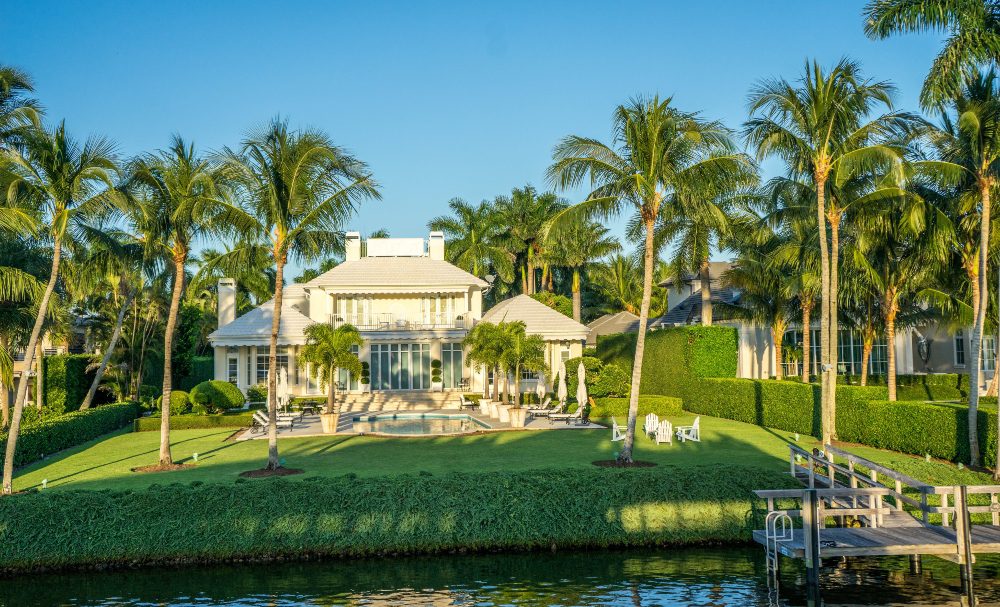
Maintaining Water Features in a Tropical Garden Design
Regular maintenance is key to keeping your water feature in good condition. This includes:
- Cleaning: Regularly clean the water feature to prevent algae growth and keep the water clear.
- Water Quality: Monitor water quality, especially if you have fish. Use appropriate treatments to maintain a healthy ecosystem.
- Pump and Filter Care: Regularly check and maintain pumps and filters to ensure they function correctly.
Benefits of Water Features in Tropical Garden Design
- Aesthetic Appeal: Water features add a visually appealing element, making your tropical garden design more dynamic and interesting.
- Attracting Wildlife: Water features attract birds, insects, and other wildlife, bringing your garden to life and helping pollinate your plants.
- Cooling Effect: They provide a cooling effect, making your garden more comfortable during hot weather.
Creating Pathways and Seating Areas
In tropical garden design, pathways, and seating areas are more than functional elements; they are integral components that enhance the overall experience of the garden. This section focuses on designing pathways and seating areas that complement the lushness of a tropical garden while providing comfort and ease of movement.
The Importance of Pathways in Tropical Garden Design
Pathways are essential in guiding movement and creating a journey through the garden. They should be designed to flow naturally, leading visitors through various areas of interest.
Designing Pathways
- Material Selection: Choose materials that blend with the tropical theme, like natural stone, pebbles, or wooden planks. Avoid materials that may get slippery when wet.
- Curved Paths: Curved pathways add a sense of mystery and exploration, encouraging visitors to slow down and enjoy the surroundings.
- Width and Accessibility: Ensure pathways are wide enough for comfortable passage. Consider accessibility for all users, including those with mobility issues.
- Integration with Plantings: Pathways should be integrated with the surrounding plantings. Allow plants to spill over slightly onto the paths for a lush feel.
Seating Areas in Your Tropical Garden Design
Seating areas provide spaces for relaxation and enjoyment of the garden. They should be thoughtfully placed to offer views and comfort.
Creating Comfortable Seating Areas
Location: Choose locations that offer the best views of the garden. Consider both sunny and shaded spots for comfort at different times of the day.
- Furniture Selection: Opt for furniture that complements the tropical theme, like rattan or bamboo. Ensure the furniture is durable and weather-resistant.
- Incorporating Shade: In tropical garden design, providing shade is crucial. Use natural shade from trees or add umbrellas or pergolas.
- Adding Soft Furnishings: Cushions and throws in tropical prints or colors can add comfort and enhance the theme.
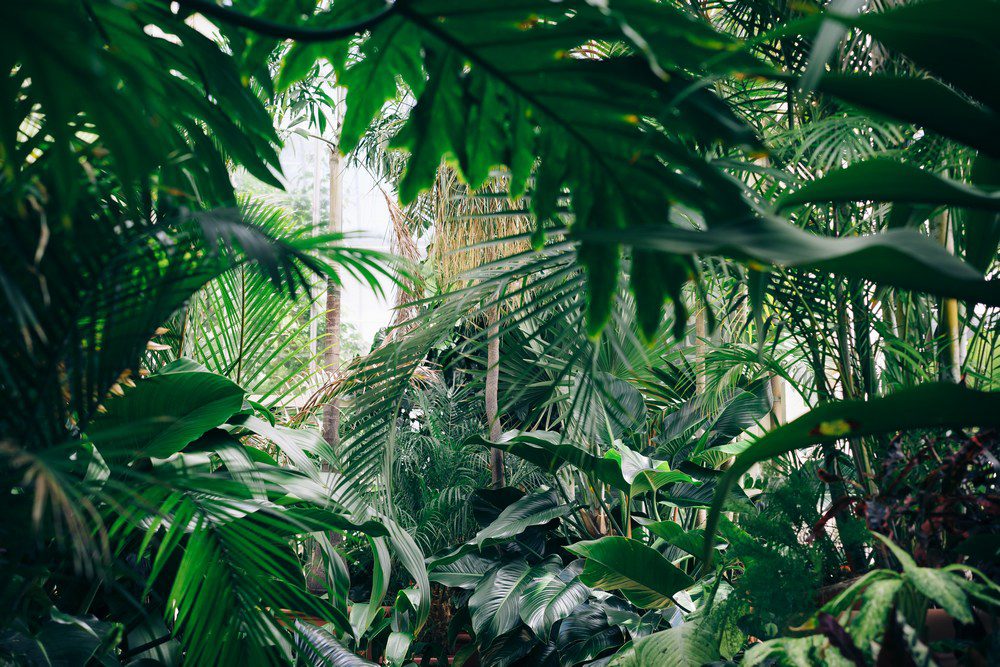
Combining Functionality with Aesthetics
Pathways and seating areas should be both functional and aesthetically pleasing. They should complement the tropical garden design, contributing to the overall look and feel of the garden.
Maintenance Considerations
- Pathway Upkeep: Regular maintenance of pathways is essential to keep them safe and attractive. This includes weeding, cleaning, and repairing any damage.
- Furniture Care: Regularly clean and maintain garden furniture to keep it in good condition and prolong its life.
Enhancing Pathways and Seating Areas
- Lighting: Add lighting along pathways and around seating areas for ambiance and safety. Use solar-powered lights for an eco-friendly option.
- Decorative Elements: Incorporate decorative elements like sculptures or water features near pathways and seating areas to create focal points.
Lighting and Accessories
Lighting and accessories play a vital role in tropical garden design, enhancing the ambiance and functionality of the space. This section explores how to choose and implement lighting and decorative accessories to elevate your tropical garden.
Strategic Lighting in Tropical Garden Design
Effective lighting is crucial in tropical garden design, accentuating the garden’s features and creating a magical atmosphere at night.
Types of Lighting for Tropical Gardens
- Pathway Lighting: Use soft lights along pathways for safety and to guide visitors. Solar-powered stake lights are eco-friendly and easy to install.
- Accent Lighting: Highlight features like waterfalls, sculptures, or special plants with accent lighting. LED spotlights or underwater lights can be used for this purpose.
- Ambient Lighting: Create a warm and inviting atmosphere with ambient lighting. String lights in trees, lanterns, or candles can provide a soft glow.
- Functional Lighting: Ensure areas like seating or dining spots are well-lit for usability. Overhead or wall-mounted lights can be practical choices.
Designing with Lighting
- Layering Light: Use a combination of different lighting types to create depth and interest. Layering light helps in achieving a balance between functionality and aesthetics.
- Choosing the Right Fixtures: Select fixtures that complement the tropical theme. Materials like bamboo, wood, or wrought iron can enhance the natural feel.
- Energy Efficiency: Consider energy-efficient options like LED lights and solar-powered fixtures to reduce your environmental footprint.
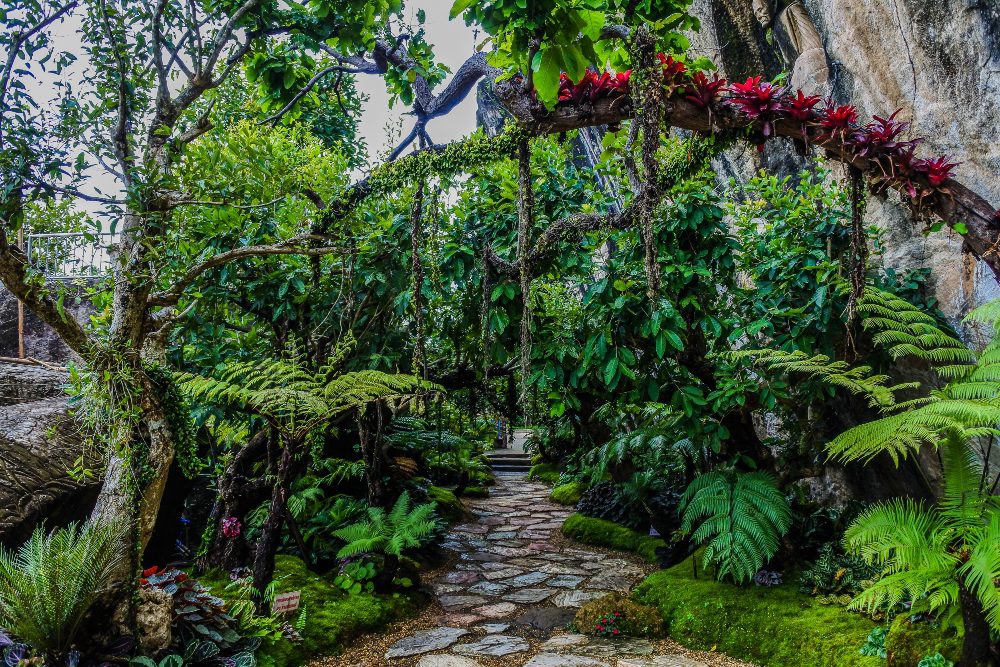
Incorporating Accessories in Tropical Garden Design
Accessories add character and personal touch to tropical gardens. They should be chosen to complement the overall design and theme.
Types of Accessories for Your Tropical Garden Design
- Statues and Sculptures: Select statues or sculptures that resonate with the tropical theme. These could be figures of animals, birds, or abstract art.
- Planters and Pots: Use planters and pots in natural materials like terracotta or stone. They can be used to add height and interest to specific areas.
- Water Features: Small, portable water features like tabletop fountains can add a sense of calm and bring the soothing sound of water.
- Decorative Stones and Pebbles: Use decorative stones or pebbles to create borders, fill spaces, or decorate around plant bases.
Enhancing Your Tropical Garden Design with Accessories
- Thematic Consistency: Ensure that the accessories fit the tropical theme. They should blend seamlessly with the surroundings and not appear out of place.
- Balance and Proportion: Place accessories strategically to maintain balance. Avoid cluttering the space, allowing each piece to stand out.
- Creating Focal Points: Use accessories to create focal points in the garden. This can draw attention to special areas or plants.
Maintenance and Upkeep
Regular maintenance of lighting and accessories is essential to keep them functioning well and looking great.
- Cleaning Lights and Fixtures: Regularly clean light fixtures to ensure optimal illumination and longevity.
- Checking Electrical Connections: For safety, routinely check all electrical connections and wires, especially for outdoor lighting.
- Caring for Accessories: To prevent damage, clean and maintain accessories, especially during adverse weather conditions.
Maintenance Tips for Tropical Gardens
Effective maintenance is crucial in tropical garden design to ensure the garden remains healthy and vibrant. This section provides essential tips for maintaining a tropical garden, ensuring it thrives and continues to provide a lush, exotic retreat.
- Regular Watering: Due to their native humid environments, tropical plants often need more frequent watering.
- High Humidity: If you live in a drier climate, consider ways to increase humidity, like grouping plants or using water features.
- Rich, Well-Drained Soil: Tropical plants thrive in nutrient-rich soil. Regularly adding compost or organic matter helps maintain soil quality.
- Pruning and Trimming: Regular pruning keeps plants healthy and encourages growth. Remove dead or diseased leaves and branches to maintain the garden’s appearance.
- Weeding: Weeds can compete with your tropical plants for nutrients and water. Regular weeding is necessary to keep them at bay.
- Pest and Disease Control: Be vigilant about pests and diseases. Use natural or recommended pesticides and fungicides to treat any problems.
- Deep Watering: This encourages deep-root growth. Water less frequently but more deeply to reach the roots.
- Mulching: Mulch helps retain soil moisture and reduces water evaporation. It also adds organic matter to the soil as it decomposes.
- Avoiding Waterlogged Soil: Ensure good drainage in your garden to prevent waterlogged soil, which can harm tropical plants.
- Regular Fertilization: Use a balanced fertilizer suitable for tropical plants. Organic options like compost or manure are beneficial.
- Testing Soil pH: Occasionally test the soil pH to ensure it’s within the optimal range for your tropical plants.
- Soil Aeration: Loosen the soil periodically to improve aeration and water penetration.
- Spring Preparation: Spring is a good time for planting new additions, pruning, and applying mulch.
- Summer Care: Focus on regular watering and pest control during the hot months.
- Fall Cleanup: Remove any fallen leaves and debris. Prepare plants for cooler weather if necessary.
- Winter Protection: In cooler climates, protect sensitive plants from frost. Consider moving potted tropicals indoors.
- Plant Rotation and Replacement: Occasionally, rotate or replace plants to keep the garden vibrant and interesting.
- Refreshing the Landscape: Consider refreshing your garden layout every few years or adding new elements to keep it exciting and engaging.
FAQ on Tropical Garden Designs
What is tropical garden design?
Can I create a tropical garden in a cooler climate?
How often should I water my tropical garden?
What are some must-have plants for a tropical garden?
How do I choose the right location for my tropical garden?
Are water features necessary in tropical garden design?
What type of maintenance does a tropical garden require?
How do I protect my tropical garden in winter?
Can I incorporate a lawn into my tropical garden design?
How can I make my tropical garden more wildlife-friendly?
Conclusion
Tropical garden design offers a unique opportunity to transform your outdoor space into a lush, vibrant oasis. With the added touches of appropriate lighting and accessories, your tropical garden becomes a visual delight and a sensory experience. Regular maintenance ensures that your garden remains a healthy and enchanting retreat.


